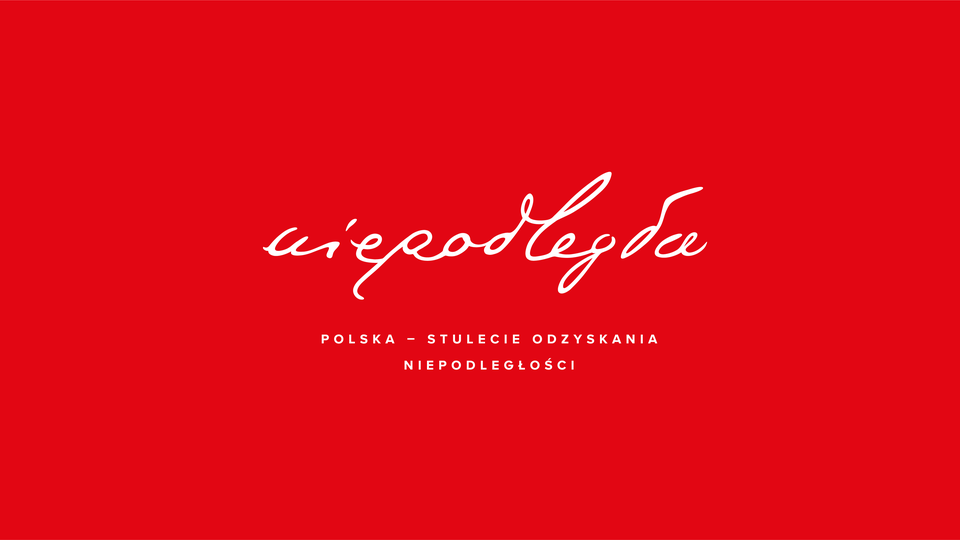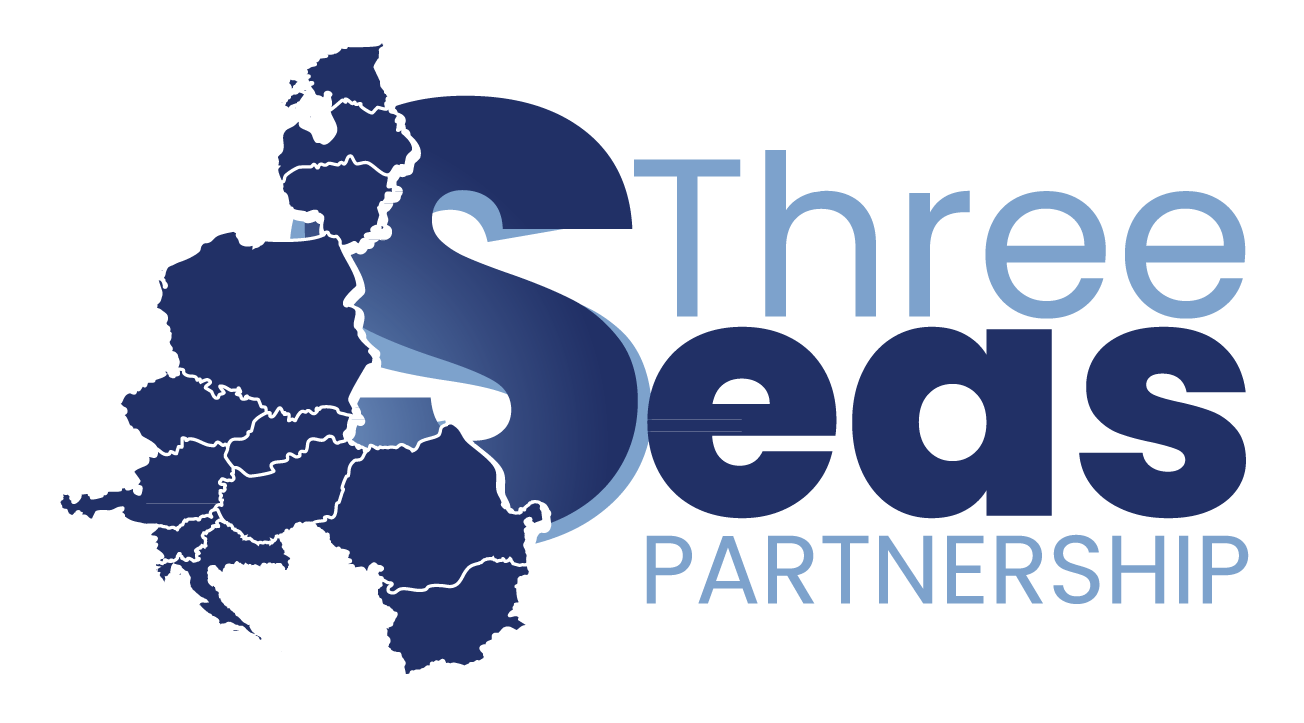EVENTS
REPORT NIEPODLEGŁA
In the period April – September, the Warsaw Institute had the honor to perform the public task “The Young Sovran – 100th anniversary of Poland’s independence.” The project was co-financed by the Multiannual Program “Niepodległa” (“Sovereign”) for 2017-2022.
As part of the task, the Warsaw Institute conducted four expert meetings, which took the form of discussions, debates, and lectures. The following events were organized.

History of the Church in Ćwiklice
Date: 27th April 2021
The Warsaw Institute held an online lecture. The event “The History of the Church in Ćwiklice” was held as part of the program Young Independent – The Centenary of Poland Regaining Independence. The speakers were Marian Małecki, a professor of the Jagiellonian University and specialist in the history of political system and law, and Fr Sylwester Suchoń, the parish priest of the St. Martin of Tours Church in Ćwiklice.
The church in Ćwiklice, which is now part of the Wooden Architecture Trail in Silesia, Poland, was erected between 1464 and 1466, thus being the oldest wooden church in southern Poland. Its provenance was confirmed by dendrochronological analyses and the study of post-visitation decrees from the Cracow Curia. The church has a log frame structure yet it was rebuilt and refurbished many times later. Nonetheless, it features some hidden gems: Baroque altars, a 17th-century polychrome, and a particularly valuable Gothic triptych located in the side chapel.
After exchanging some welcoming remarks and introducing the panelists by the host, Marian Małecki, professor of the Jagiellonian University, first took the floor. He began his lecture by outlining the history of the Pszczyna Land back in the Middle Ages.
It is worth noting that Ćwiklice is a village located within Pszczyna County in Upper Silesia, Poland. The first mention of this place comes from the 1326 Peter’s pence census of the parish of the Oświęcim deanery at the diocese of Cracow where it was listed as Czviclicz. The town granted German city rights while the settlement is said to have taken its name from the moniker of its first settler or founder – “Ćwikło.” Furthermore, the whole Pszczyna Land is filled with history and its remnants. The most important of them are museums or battlefields hiding some weapons ranging from the Middle Ages to World War II as well as sacred pearls being part of the Wooden Architecture Trail.
The first reference in sources to Pszczyna dates from 1303, though the latest research shows the place was settled earlier, in the 13th or even the 12th century. These lands had a great deal of independence at the time of fragmentation. Interestingly, they fell under some foreign influence too. At that time, the place was tinted with Polish and Czech culture that dominated but there were also some German and Hungarian influence, as well as Lithuanian, the last thanks to Helena of Lithuania (also known as Helena Korybutówna). Yet in 1327 John of Bohemia captured also the Pszczyna Land in a move that intensified Czech and German influences in these areas.
Throughout the 16th century the church in Ćwiklice – like many others nearby – was changed by the Reformation. Between 1574 and 1575 Protestants seized control of the parish church in Ćwiklice. The 17th century brought the Catholic Revival, a movement strongly backed by Austria’s House of Habsburg; in consequence, the church returned to the Catholic Church. The jewel in the Habsburg crown, the entire region of Silesia would often attract neighboring powers, with Prussia claiming its rights to become a superpower throughout the 18th century. In 1740, Frederick the Great, who seized most of the region of Silesia, declared the First Silesian War while the House of Hohenzollern eventually secured the lands as sealed by the Peace of Hubertusburg in 1763. From 1871 the Pszczyna Land was part of the newly established German Empire.
When World War I broke out, the German chief of staff held his headquarters in the town of Pszczyna. Both Pszczyna and Ćwiklice also saw the Silesian Uprisings when the Polish population was seeking to have the area transferred to the newly reborn Polish Republic. It is unusual as these areas had not belonged to the Polish state since 1327. What must have been behind it is that until 1822 the Pszczyna Land had belonged to the Archdiocese of Cracow.
Ćwiklice and Pszczyna also suffered from the turmoil of World War II. Due to their geographic location, they were home to many fortresses. On September 1, 1939, the 5th Panzer Division under General Heinrich von Vietinghoff’s command attacked from the Racibórz-Rybnik border. yet were halted some 8 kilometers far from Pszczyna. The Battle of Ćwiklice took place on September 2, north of the St. Martin Church. It was lost and the Polish forces retreated eastwards. Then the German occupation began, a period that also saw a “death march” of Auschwitz prisoners. They headed through both Ćwiklice and Pszczyna as some of them were evacuated eastwards from the latter town and a satellite camp in Czechowice-Dziedzice. Now these places are home to memorials and plaques commemorating the victims of Nazi fascism.
In his lecture, Fr Sylwester Suchoń insisted on the historic context of the church in Ćwiklice, noting it stands out as a genuine symbol of medieval Christianity in Central Europe. A movable historical object from Gothic times is the altar – a triptych from 1475 located in the side chapel. The central part of the triptych depicts the Virgin Mary with the Infant Jesus conversing with St. Martin of Tours and St. Stanislaus of Cracow. In the left wing of the triptych, St. Apostles Peter and Paul, St. Barbara, and St. Catherine of Siena listen to this exchange while in the right wing of the triptych, it is St. John the Baptist, St. James, St. Dorothy, and St. Margaret who listen.
Although the church was first built in the Gothic style, it was partially refurbished in the period of Reformation. At the beginning of the 18th century, the interior of this Gothic church had been rebuilt in the Baroque style by the owners of Ćwiklice – Andrzej Zborowski and his father-in-law, Judge Marcin Kozłowski, both of whom were buried in the crypt. As a result of another reconstruction at the turn of the 19th and 20th centuries, the church was enlarged by the space under the tower.
The oriented building has kept its log frame structure. The nave was designed on a quadrilateral plan, with the more recent chapel built on its southern side. The porch and a sacristy were built near the presbytery. The double-pitched roofs over the nave and the presbytery are covered with roof shingles. At the entrance, there are plaques commemorating parishioners killed in World War I and Silesian uprisings. In 2010, a thorough renovation of the church began under the supervision of Fr Sylwester Suchoń. The restoration included first of all laying reinforced concrete foundations to a depth of two meters, replacing ground sills, partially replacing the tower pillars, reinforcing walls from the exterior with double studs, repairing the roof framework, and the tower, replacing the boarding and roof shingles, as well as drying.
At the entrance, under the tower, there is the “Veil of St. Veronica” with the Savior’s reflected face and the “Arma Christi,” the instruments of torture. The recollection of the Passion of Jesus in this part of the church is completed by the restored Way of the Cross and the Pieta sculpture from the 18th century. On the presbytery ceiling, we can admire the fresco “Assumption of the Blessed Virgin Mary,” and, above the main nave, “Crowning of the Mother of God by the Holy Trinity.” The main altar features a beautiful painting of St. Martin of Tours and figures of saint bishops Adalbert and Stanislaus, Charles Borromeo, and martyr St. John of Nepomuk, also a priest. The altar on the left side of the main nave depicts the Sistine Madonna, St. Joachim, and St. Joseph. In the center of the altar on the right side of the church, there is a painting of the Crucifixion of Jesus, with St. Wenceslas and Christopher looking at the Savior. As a result of the renovation, visitors can now admire the Baroque pulpit and the baptismal font. In 2016, St. Martin’s Church celebrated its 550th anniversary, presided over by Rev. Wiktor Skworc, Archbishop of Katowice. In a few years, another jubilee is to be celebrated – the 700th anniversary of the parish. According to the parish priest, the chances are that the monuments mentioned in the article will one day obtain the title of “monument of history” and be enrolled on the UNESCO list, while it is also possible that the church will be given the title of “sanctuary.”
Certainly, Upper Silesia, the Pszczyna Land, and especially the “pearl” of Ćwiklice are areas and monuments worth visiting as they tell stories about the hardships of Polish history and the identity of Polish culture. According to Fr Suchoń, the Polishness, which manifests itself in hospitality, care for the other person, and history, is present in today’s Silesians, all of which one can experience in person when visiting southern Poland.
Poland’s National Defense Fund and Diversified Financial Involvement of Polish Residents by Region
Date: 25th May 2021
On May 25, 2021, the Warsaw Institute hosted Dr. Jan Wiśniewski who delivered a lecture titled Poland’s National Defense Fund and Diversified Financial Involvement of Polish Residents by Region.
The event was held as part of the program Young Independent – The Centenary of Poland Regaining Independence, financed under the NIEPODLEGŁA Multiannual Program for 2017-2022.
Dr. Jan Wiśniewski is the Coordinator of the Regional Center for International Debate in Toruń, Poland. He also works as a lecturer at the College of Social and Media Culture in Toruń, Poland. He is also a research worker at the Nicolaus Copernicus University in Toruń. His field of expertise is the history of World War I, the Russian civil war, and contemporary armed conflicts in the post-Soviet region. He was a scholarship holder of, among others, the Lanckoroński Foundation, Poland’s National Center for Research and Development, and the Ministry of Education and Science. He authored three monographs and over sixty research articles in domestic and foreign journals.
The lecture consisted of three parts. The first embraced the origin of the National Defense Fund (Fundusz Obrony Narodowej, FON) in the pre-war period. In the second part, the speaker portrayed the Fund during World War II. In the last chapter, the lecturer outlined the post-war reality and how the Fund was appropriated by the Communist regime in Poland. At the lecture, the speaker insisted that a large group of Poles got involved in backing the Fund before the war, a move that stemmed from their fear of an imminent threat from emerging Nazi Germany and the Soviet Union. At the same time, Dr. Wiśniewski noted that the budget of the Military Affairs Ministry, or the pre-war equivalent of Poland’s Ministry of National Defense, could not fully satisfy the needs of the Polish army. Although Poland had one of Europe’s most numerous armies of over 1,000,000 soldiers, it saw a severe shortage of weapons. The speaker also added that with money collected in the Fund it was possible to complete some vital military projects in pre-war Poland, one example being the construction of ORP Orzeł (Eagle), the lead ship of her class of submarines serving in the Polish Navy during World War II. The lecturer added that people from different backgrounds donated to the Fund, with many from Poland-based minorities, mainly Belarusians and Ukrainians. The Fund also saw help from the Polish diaspora, notably in Romania and the United States.
In 1939, FON sources were shipped to France via Romania; before they had been divided into gold and silver. Silver traveled from Romania to France through the seaport of Marseille where it remained till the end of the war. Gold was transported to London. Some 210 kilograms of gold was shipped to Sudan where it remained until 1944 before being sent to the Rubens Hotel in London that back was home to the headquarters of the Polish Armed Forces.
In the third part, Dr. Wiśniewski described the fate of the Fund after the war, adding it was challenging to give a clear estimate of how much of it was grabbed by the Communist regime in Poland. General Stanisław Tatar then decided to send the gold back to Communist-controlled Poland. According to the speaker, the purpose was to win the favor of new state authorities. Yet after General Stanisław Tatar was given the Knight’s Cross of the Order of Polonia Restituta, he was detained for spying charges and sentenced to life imprisonment. The lecturer also mentioned the fate of silver fits that traveled from France to Poland under a deal signed by Edward Gierek, First Secretary of the ruling Polish United Workers’ Party, and Valéry Giscard d’Estaing, President of France.
To conclude, the speaker said that the Fund, aimed at collecting funds through long-year donations from the Polish nation, fell victim to Communist politicians.
Piłsudski, Dmowski, and Paderewski – the Fathers of Polish Independence and Their Vision of the Country
Date: 29th June 2021
On June 29, 2021, a debate took place and included the following participants: Jan Wiśniewski, PhD – coordinator of the Regional Centre for International Debate in Toruń, lecturer at the College of Social and Media Culture in Toruń; Karol Wołek – chairman of the Kazimierz Wielki Foundation, the Kazimierz Wielki Association, the Main Board of the Union of Soldiers of National Armed Forces, and the Amor Patriae Foundation; as well as Jakub Lachert – expert of the Warsaw Institute. The debate was moderated by Tomasz Kijewski – president of the Warsaw Institute.
The event was organized as part of the Młoda Niepodległa (Young Independent) scheme – 100th Anniversary of Poland’s Regaining Independence, co-financed by the government’s Niepodległa (Independent) multiannual program for 2017–2022.
The debate consisted of two parts: the first one aimed to outline the profiles of the fathers of independent Poland and the foundations of the ideologies that guided them in their political activities. The second part was an attempt to confront the significance of these figures for the Second Polish Republic and the main assumptions of the political thought of that period.
In the first part, Dr. Jan Wiśniewski characterized Józef Piłsudski, starting from his early years when the future Commander of the Polish Army was sent to exile in Siberia and his accidental underground activity. Pilsudski’s major challenge was to combine socialist ideology with the idea of an independent Poland. The two notions were often contradictory. Dr. Wiśniewski stressed that Piłsudski’s pro-independence views were formed only after the 1905 revolution. Piłsudski was a politician and military man who, although had no formal military training, reached top posts in the Polish army. However, his decisions in the 1930s led to the disorganization of the army, which resulted from the lack of formal experience.
The second speaker, Mr. Karol Wołek, characterized Roman Dmowski as the main ideologist, diplomat, and politician of the interwar period. As the leader of the National Democracy, founded in the early 20th century, Dmowski tried to act in all three partitioned territories. Dmowski characterized the nation as a cultural community which was the starting point for setting new political goals without creating any dogmas in this matter. A factor that was vital for building the Polish nation was the establishment of national boundaries to maintain the Polish statehood. To this end, it was crucial to repel Germany, which, according to Dmowski, was the main threat to Poland’s cultural unity. However, this was not due to ideological factors, but solely practical considerations. Mr. Wołek stated that the basic difference between Dmowski and Piłsudski was the matter of building the Polish state within the framework of certain compromises towards the partitioners, which was assumed by Piłsudski, and the complete political and economic independence of the reborn Republic as the fundamental condition of the struggle for independence.
While characterizing Ignacy Jan Paderewski, Mr. Jakub Lachert, representing the Warsaw Institute, stressed that the reason behind his activity for the Polish state was his diplomatic work during World War I and the formation of the new Polish state, especially in terms of his diplomatic activity in the United States and his personal meetings with the American President Wilson. Paderewski’s pro-independence activities were also noticeable during the Versailles peace negotiations, in which he participated.
The second part of the debate comprised an exchange of opinions on the significance of the figures listed above for the Polish independence. The core element of the discussion concerned the role of Roman Dmowski and Józef Piłsudski in regaining independence. Karol Wołek highlighted the value of the ideological foundations of Polish statehood presented by Roman Dmowski and his significant role as a diplomat. In turn, Dr. Wiśniewski emphasized the importance of Józef Piłsudski for the politics of the Second Polish Republic and his tactical genius during the 1920 war.
Another element of the dispute was the matter of presenting Roman Dmowski as a national activist in an ethnic sense. His ideas were much broader and also transcended a certain class division that identified Polishness with the nobles and men. Dmowski’s goal was to reject this patriarchal approach – that is why the activities of the National Democracy gathered a lot of women and peasants.
Poland after regaining independence – three partitioners – one country. Differences and similarities between particular partitions
Date: 28th September 2021
On September 28, 2021 the debate took place with the participation of Karol Wołek – president of the Kazimierz Wielki Foundation, the Kazimierz Wielki Association, the Board of the Union of National Armed Forces Soldiers and the Amor Patriae Foundation, Artur Krzeszowiak – specialist in communication strategy and expert of the Warsaw Institute and Tomasz Kijewski graduate of, among others. He is a graduate of international relations at the University of Lodz (scholarship at the Center for Transatlantic Studies in Maastricht, Netherlands) and the study program in national security (PASS) at the General Marshall European Center for Security Studies (Garmisch-Partenkirchen / Washington DC).
The speakers focused on presenting the standards of living in the various annexations (Prussian, Russian and Austro-Hungarian), as well as comparing the possibilities for cultivating Polish traditions and culture in different parts of the territory of enslaved Poland. Experts have made a study and factual comparative analysis in the context of the educational level of Poland’s post-independence population. In addition, they identified and analyzed the differences between the levels of economic development of the various partitions, and presented their origins.
We encourage you to read the summaries of the events and their full recordings available at the links above.

_________________________________
All texts published by the Warsaw Institute Foundation may be disseminated on the condition that their origin is credited. Images may not be used without permission.
















